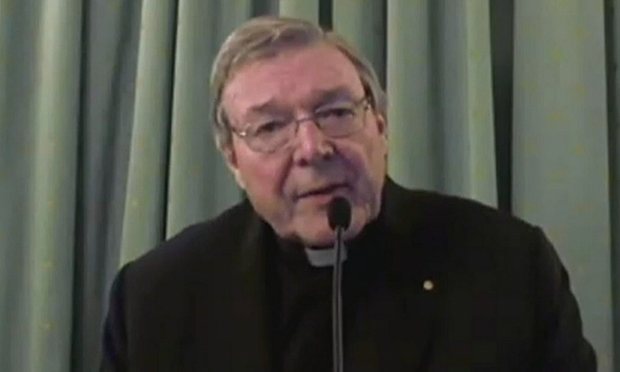Was George Pell, Now Scourge of the Vatican, Once Hoodwinked by All around Him?
By David Marr
George Pell must have a nose for the runaround. These days he’s putting the cleaners through ancient Vatican offices which have never ever been audited. Millions are coming to light. He has enemies everywhere. All reports from the Holy See suggest the cardinal is doing well. But the same man has a sad story to tell of being hoodwinked decades ago by an archbishop, a bishop, his colleagues and even the Catholic Education Office. Yes, the Catholic Education Office of Melbourne failed to give him “anything like adequate information” that might have saved the children of Doveton from the hideous Father Peter Searson. “They realised very clearly I was not cut from the same cloth,” the cardinal explained. And what was his evidence for that? “I represented a very different approach to matters which became apparent when I became archbishop.” Yes, but what did he do when he arrived in Melbourne in the 1980s as an auxiliary bishop? He never asked for the files on Searson. He never confronted Archbishop Frank Little. He didn’t rock the boat. “In retrospect I might have been a bit more pushy with all the parties involved.” When Pell began to sketch the outlines of a grubby conspiracy by the Catholic Education Office to keep him in the dark in order to protect the inaction of Little, both the chair of the commission, Peter McClellan, and counsel assisting Gail Furness SC expressed frank disbelief. Pell denied concocting his evidence to deflect blame from his own inaction. He insisted he had done his duty – his whole duty – by taking the Searson case to Little. “I was not obliged to do more than that.” He cut a wretched figure in the witness box. After a couple of hours of interrogation he began to look like one of those Francis Bacon portraits of beefy men under torture. On that grey screen, the only colour was his face. Everyone in the upper reaches of the Melbourne church failed those children. But not until the documents were marshalled today by the royal commission into institutional responses to child sexual abuse was the scale of the failure – or perhaps its stench – so apparent. We already knew Searson had been reported to church authorities for toting a gun, bashing kids across the face with clipboards, sending little girls screaming from the confessional, showing the kids at Holy Family primary a body in a coffin and one day stabbing a bird to death in front of them with a screwdriver. “I don’t know whether the bird was already dead,” remarked Pell. Does it matter, he was asked? “Not really. Not really.” But now we know that Searson had little girls kneel between his legs at confession. We know of many more complaints of touching. And we know that none of these complaints provoked action by the church. After futile delegations of teachers and parents had gone to Pell begging him to get rid of the priest and the Catholic Education Office had sent fruitless complaints to the hierarchy for a decade, the office sent the bishops awful testimony of Doveton children in their own words. Perhaps they hoped this would finally compel action. “Father gives me the no feeling when he touches me,” said one of the children. “Once Father felt me and also Father hit me in the neck … Soon he’ll be feeling us all over.” But nothing happened. Pell can’t even remember those details being discussed in the Melbourne curia of bishops. A year later Searson held a knife to the chest of a little girl saying: “If you move this will go through you.” Pell and his fellow bishops decided: “Nothing could be done about this incident.” Why? Because the police decided not to prosecute the priest. The minutes of the curia made the reason clear: not for lack of evidence but because the parents didn’t want their child dragged through the courts. McClellan’s tone shifted at this point. He addressed Pell as if he were a teacher taking a pupil through a not very difficult geometry problem: “Is it not the case that the church has a responsibility to deal with those allegations irrespective of whether the police are able to take action?” Pell sparred for a time before conceding it was. But he insisted the fact the police pulled out was “a factor in how you can go forward effectively”. Searson was not sacked for another four years, not until the police did, in fact, take action after he had bashed another altar boy. The attention of the police seemed powerfully persuasive in the thinking of the archdiocese. Little was gone by then and Pell had taken his place. The great narrative he would have the commission – and his church – believe is that authority, when it came to him, allowed his true self to emerge. After nearly 20 years, years where he had seen little and done less, years where he was powerless and kept in the dark by all around him, he became Archbishop of Melbourne, scourge of paedophiles, benefactor of their victims and a champion of children.
|
.
Any original material on these pages is copyright © BishopAccountability.org 2004. Reproduce freely with attribution.
